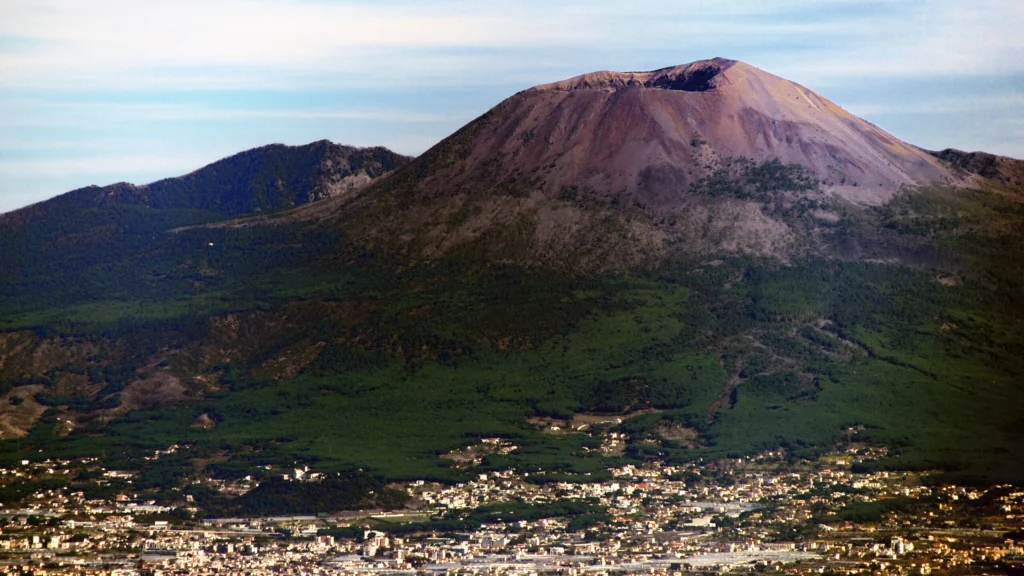Mount Vesuvius is a somma-stratovolcano in Campania, Italy, about 9 km east of Naples and a short distance from the coast. It is one of the volcanoes that make up the Campanian volcanic arc. Vesuvius is made up of an enormous cone partially surrounded by the steep rim of a summit crater formed by the collapse of an earlier and much higher structure. But did you know how hot the Mount Vesuvius eruption was?
The Mount Vesuvius explosion in 79 C.E. was so hot that it transformed one victim’s brain into a glass.
The Story of the Glass Brain
Mount Vesuvius unleashed its wrath in AD Herculaneum was just one of several towns destroyed by superheated volcanic avalanches in 79. Experts are still unsure what killed the victims of this once-bustling metropolis three centuries after excavations began.
Various studies have blamed the inhalation of ash and volcanic gasses, a severe heat shock, and even the evaporation of people’s delicate tissues, collapsing structures, flying debris, and stampedes of fleeing residents.
Two new pieces of research add a few twists to the story.
Those who sought refuge in the town’s boat houses were not burned or vaporized but instead cooked as though inside a stone oven. The second has discovered a victim in another part of town whose brain looks to have melted before being frozen into a glass as if affected by sorcery.
Even if future study confirms these two stories of biological transmogrification, we still don’t know how these people perished. All that can be said is that this may have occurred near their death. (Source: National Geographic)
How Did The Brain Turn Into Glass?
Cerebral tissues are incredibly unusual in ancient findings. Even when discovered, they are frequently unpreserved and have degraded into a soapy mixture of substances such as glycerol and fatty acids. Petrone decided to investigate one specific victim, discovered in the 1960s inside the Collegium Augustalium, a building dedicated to the religion of Emperor Augustus, who governed Rome from 63 BC to AD 14.
A glassy substance was discovered inside the broken skull, which was remarkable given that the eruption produced no glassy volcanic material. The glass in the skull included proteins and fatty acids present in the brain, as well as fatty acids found in the oily secretions of human hair. There were no plant or animal sources of these chemicals nearby.
The crystalline fragments, according to Petrone, are most likely the victim’s brain, the first of its sort discovered in any ancient or modern environment. (Source: National Geographic)
The Process of Baking, not Burning
For a long time, the victims’ bones were thought to be nothing more than obliterated fragments. However, during the last decade, new scientific tools have allowed the analysis of charred human pieces to provide windows into the time surrounding these people’s deaths.
According to the new research, the lower end of the range is more likely. Even at milder temperatures, the victims’ bones should have been damaged more. The absence of this damage indicates that the cadavers were shielded from the surges.
The entire fornici walls most likely mitigated the heat damage because the people were discovered nearby. The skeletons were baked rather than incinerated due to swelling exterior tissues and interior water accumulating around long bones.
Notably, the victims were not set ablaze on a pyre; rather, the surges heated the air surrounding them, which is less effective at burning human flesh than actual fire. (Source: National Geographic)
Image from Outside Magazine
